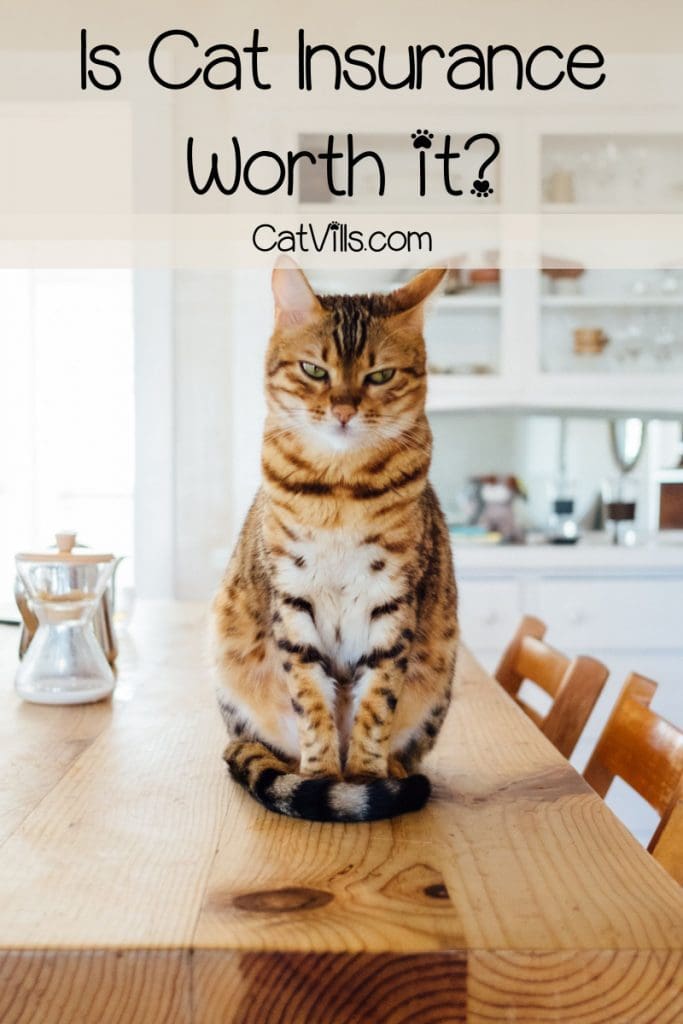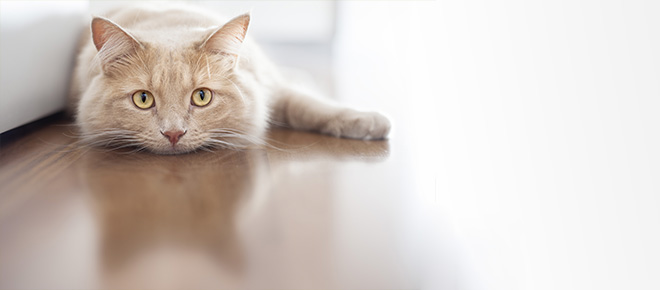Cat Insurance Cat Insurance Plans Nationwide Quote Get Pet
Cat insurance has become an increasingly relevant topic for many cat owners, primarily due to the rising costs associated with veterinary care. While cats are often considered independent animals, they are still susceptible to various health issues that could lead to expensive treatments. This has caused many pet owners to consider the benefits of having insurance for their feline companions. Here, we will explore the intricacies of cat insurance, its necessity, its benefits, potential downsides, and what to consider when choosing the right policy.
Before diving into the specifics, it is essential to understand what cat insurance entails. Cat insurance is a type of coverage designed to help mitigate the financial burdens of veterinary bills. It can cover various medical treatments, such as routine care, emergency surgeries, and chronic conditions. Here are several key aspects to consider:
- Types of Coverage: Cat insurance policies vary widely in terms of coverage options. Some policies cover only accidents and illnesses, while others may also include routine preventive care, dental services, and behavioral therapy.
- Premium Costs: The cost of premiums can differ based on various factors, including the cat’s age, breed, medical history, and geographic location. Young, healthy cats usually have lower premiums, whereas older cats or those with pre-existing conditions may face higher costs.
- Deductibles and Co-pays: Most insurance policies come with deductibles and co-pays. A deductible is the amount you pay out of pocket before the insurance kicks in, while a co-pay is a set percentage of the eligible expenses you will continue to pay after the deductible.
- Waiting Periods: Most insurance policies impose waiting periods in which certain conditions won't be covered immediately after the policy is purchased. It's crucial to be aware of these waiting times, especially for emergencies.
- Exclusions: Like any insurance, there are exclusions. Many policies do not cover pre-existing conditions, hereditary diseases, or certain types of preventative care.
- Reimbursement Process: After receiving care, pet owners must file a claim with the insurer to receive reimbursement. Understanding the claims process in advance can help avoid any surprises later on.
When considering cat insurance, many people find themselves asking if it is truly necessary. This question often highlights the age-old debate of whether the cost of insurance outweighs the potential benefits. Here are several points that can help clarify this issue:
- Rising Veterinary Costs: Veterinary care costs have increased significantly over the years, making it challenging for pet owners to afford emergency treatments or complicated surgeries without financial help.
- Peace of Mind: Having cat insurance can provide peace of mind, knowing that you will be better prepared to handle unexpected health issues without the stress of immediate financial strain.
- Long-term Health Considerations: Just like humans, cats can develop chronic conditions over time. Having insurance allows for consistent care that may prevent issues from worsening, ultimately saving money in the long run.
- Behavioral Health and Wellness Plans: Some insurance plans offer coverage for behavioral therapy, which is beneficial for addressing issues like anxiety or aggression that can arise in certain cats.
- Pet Owner’s Financial Situation: Depending on an individual's financial stability, the upfront cost of insurance could be more beneficial than potentially facing an emergency without coverage.
However, it is worth noting that cat insurance may not be suitable for everyone. Some pet owners prefer to set aside funds in a savings account for veterinary care, often referred to as a “pet health fund.” This strategy has its advantages, including the lack of premium payments and the potential to accrue interest on savings. Ultimately, the decision rests on personal preferences and financial circumstances.
Is Cat Insurance Worth It?

Many cat owners ponder whether cat insurance is worth the investment. The answer depends on several factors, including the cat's health, age, and lifestyle. For young, healthy cats with no pre-existing conditions, the cost of premiums may seem excessive compared to potential veterinary visits. However, as cats age, their medical needs may increase, making a comprehensive policy more beneficial.
What Should You Look For When Choosing Cat Insurance?

When searching for the best cat insurance policy, consider the following:
- Coverage Details: Understand what is included in the policy and what exclusions you might face. It is advisable to read the fine print to get clarity on the coverage you will receive.
- Limitations and Caps: Some policies impose limits on payouts, and it’s essential to ensure these limits are adequate for your cat's needs.
- Provider Reputation: Research the insurance provider’s reputation through reviews and feedback from other pet owners. A reliable provider is crucial for smooth claims processing and customer service.
- Customizable Plans: If the provider offers customizable plans, you can tailor your coverage based on your cat’s needs and your financial situation.
- Discounts and Promotions: Look for potential discounts, such as those for multiple pets or if you are a member of certain organizations.
Choosing the right cat insurance policy requires careful consideration. Always make sure to obtain quotes from various providers, compare them based on coverage, premium cost, and customer satisfaction. Taking the time to do adequate research can result in substantial savings and peace of mind for cat owners.
What Are the Common Misconceptions About Cat Insurance?

Several misconceptions surround cat insurance, which can often deter pet owners from purchasing a policy. Some common myths include:
- Insurance is Too Expensive: While it can be costly, many affordable options exist. Rates vary based on individual circumstances, and many providers offer budget-friendly plans.
- My Cat is Healthy, So Insurance is Unnecessary: Accidents and illnesses can happen unpredictably. Having insurance provides a safety net for unforeseen health issues, contributing to long-term wellbeing.
- If You Buy Insurance, You’ll End Up Paying More than You’ll Ever Use: This situation is possible but depends on the cat's health. The key is to weigh potential vet bills against insurance costs—often, it is cheaper to have it than to face a large emergency expense.
- All Conditions Are Covered: Some pet owners believe everything is covered under their policy. In reality, many policies have exclusions, so understanding what is covered is crucial.
What Is the Most Important Factor for Pet Owners Considering Insurance?

One of the most critical factors for pet owners considering cat insurance is understanding their cat's specific needs and potential risks. Each cat is different, and their health needs can vary based on age, breed, and lifestyle.
It is crucial to analyze the following:
- Age: Kittens typically have fewer health issues than older cats, who may require regular vet visits and possible medications.
- Breed: Certain breeds are predisposed to specific conditions, which should be factored into the decision.
- Activity Level: Cats that are indoor-only may have different insurance needs than those that are allowed outdoors, as they may face additional risks.
Is Pet Insurance a Long-term Investment?
Many prospective policyholders wonder whether pet insurance is a worthwhile long-term investment. The answer lies in the changes over the life of a cat. As cats age, their health can deteriorate, and having insurance can alleviate the financial burden of ongoing treatments.
Furthermore, some insurance providers offer plans that cover preventive care, allowing for regular check-ups that can catch issues early, ultimately leading to better health outcomes for the cat.
In summary, while cat insurance might initially seem like an extra expense, it is important to consider the potential financial strain that can arise from unexpected health issues. The peace of mind it brings to pet owners, coupled with the security of knowing that financial help is available when it is most needed, can make it a valuable investment for many families.
Why Do Some Pet Owners Choose Not to Get Insurance?
Some pet owners opt-out of insurance due to several reasons:
- Trust in Savings: Many believe they can manage their pet's health costs through personal savings or funds set aside specifically for veterinary expenses.
- Perceived Complexity: The insurance process can seem overwhelming, and some individuals may fear they won't understand the terms and conditions.
- No Current Health Issues: Owners of healthy cats may not feel the need for extra coverage, believing their current state negates the need for insurance.
The decision should be based on a careful assessment of individual circumstances, risks, and the benefits provided by cat insurance.
Future Trends in Pet Insurance
As veterinary practices become more advanced, the future of pet insurance will likely evolve as well. Here are some key trends:
- Increased Customization: Insurers will likely offer more personalized plans catering to specific pets’ needs.
- Technological Integration: Online portals and mobile apps will make it easier to file claims, track usage, and manage subscriptions.
- Wellness Plans Capture Interest: Many providers are expanding wellness plans to cover routine care alongside traditional insurance because of increasing consumer demand for complete health coverage for their pets.
Overall, cat insurance represents a safety net for pet owners, providing their feline companions with the necessary health care without exorbitant financial burden during difficult times. By staying informed and making educated decisions, pet owners can ensure a healthier, happier life for their beloved cats.
1. What should pet owners understand regarding the specific needs of their cats when considering insurance?
Pet owners should assess their cat’s breed, age, lifestyle, and any pre-existing conditions when evaluating the specific needs of their pets for insurance coverage. Thorough analysis helps in choosing the most suitable plan and ensures comprehensive care tailored to the cat’s requirements.
2. How can understanding veterinary costs help in deciding on cat insurance?
Understanding veterinary costs allows pet owners to estimate potential expenses associated with various treatments and conditions their cat may face. This knowledge aids in determining whether the insurance premiums are justified when balanced against the possible financial impact of unexpected veterinary bills.
3. What role does preventative care play in cat insurance?
Preventative care is a critical component of cat insurance, as it encompasses routine wellness checks, vaccinations, and dental health that can significantly reduce the risk of serious illnesses. Policies that cover preventive services encourage proactive management of the pet's health, leading to better outcomes and potentially lower costs over time.